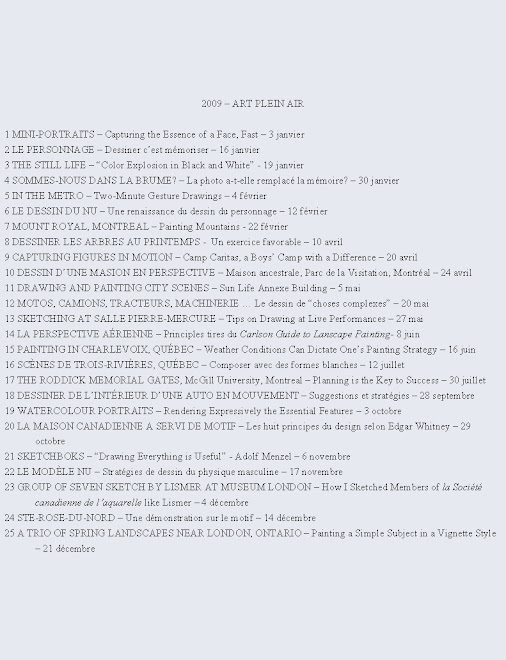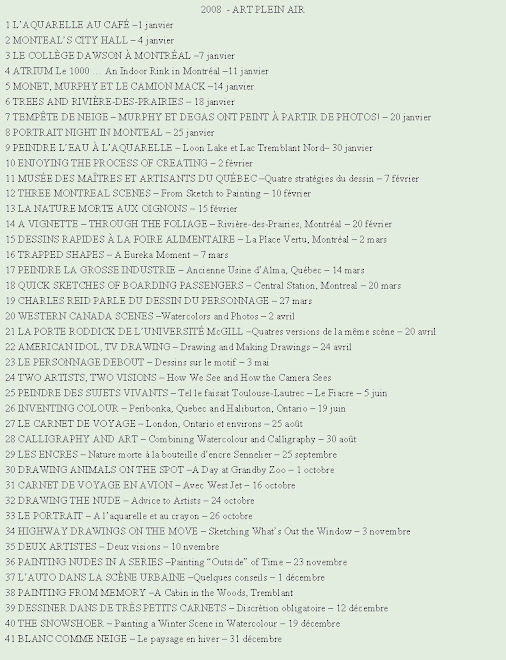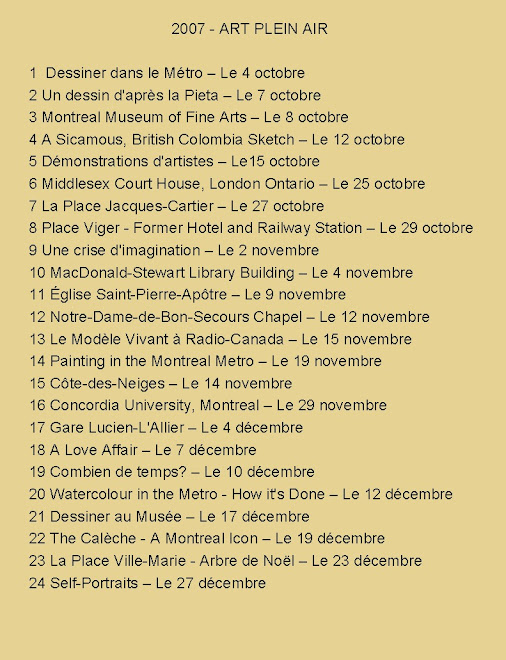 Movement: The artist can draw or paint movement in different ways. Or rather, one should say, attempt to draw movement. Movement, by its very nature is not static. Therefore, to try and render motion on paper or canvas involves a totally different mind set than drawing “from” a fixed or static motif. The strategy used is usually more complex.
Movement: The artist can draw or paint movement in different ways. Or rather, one should say, attempt to draw movement. Movement, by its very nature is not static. Therefore, to try and render motion on paper or canvas involves a totally different mind set than drawing “from” a fixed or static motif. The strategy used is usually more complex.Generally speaking, when I draw a subject that is in motion or is in potential motion, I am more involved with process than product. Its outcome is secondary.

Time does not stand still. Therefore, all drawing from nature is by essence not static. Whether or not your motif moves or not is a question of degree of motion or change. The exception is drawing from a photograph or photographs. This deals with a totally different issue to be discussed at another time.
When sitting before a landscape, for example, the leaves may rustle slightly, the brook babbles, shadows come and go and so on. Even the live model shifts if ever so slightly, blinks, sags. The exception would possibly be the still life set up if lit by artificial light.

Drawing the landscape from a moving vehicle.
To draw a motif while looking out from a moving vehicle requires a different mind set than say, drawing from a sculpture in a Museum or drawing a Still Life. These situations are at opposite extremes. The passing landscape is constantly changing while the items on the table or the sculpture are fixed. When drawing from a still life I can choose to alter what I see when I draw. However, the stimulus is internal in this case and not external.
While I attempt to represent on paper the appearance of the passing landscape I am constantly recomposing, modifying, inventing, synthesizing, abstracting, inventing, repositioning, adjusting, and so on. I have to deal immediately with the unsettling - to a certain degree - fact that the passing motif influences my marks on paper.
Of course this is a challenge I impose upon myself with little regard for its outcome on paper. It is an exercise in deepening my understanding of “time in motion” for lack of a better phrase.
Let me conclude this discussion with some quotes from John Berger in the essay The Hals Mystery*
“Because the visible ‘appears’ one can wrongly assume that all painting is about appearances. Until the seventeenth century most painting was about inventing a visible world. This invented world borrowed a great deal from the actual world but excluded contingency. It drew - in all senses of the word - conclusions. After the seventeenth century a lot of painting was concerned with disguising appearances; the task of the new academics was to teach disguises ... His (Franz Hals’) practice as a painter was not to reduce a bouquet of flowers to their appearance ... nor distant figures in the street ... it was to reduce closely observed ‘experience’ to appearance.

The ‘experience’ of sketching the landscape from a moving vehicle is one I enjoy and find challenging. The element of contingency stimulates my creativity, memory, inventiveness and so on. This experience is quite different from drawing from a ‘fixed’ motif.
Try it, you might like it.
NOTE: In an upcoming blog (Part II) I will explain in greater detail how I draw and paint these "Highway Sketches".
*Selected essays, John Berger edited by Geoff Dyer (Vintage Books)
*Selected essays, John Berger edited by Geoff Dyer (Vintage Books)
Raynald Murphy sca









Aucun commentaire:
Enregistrer un commentaire